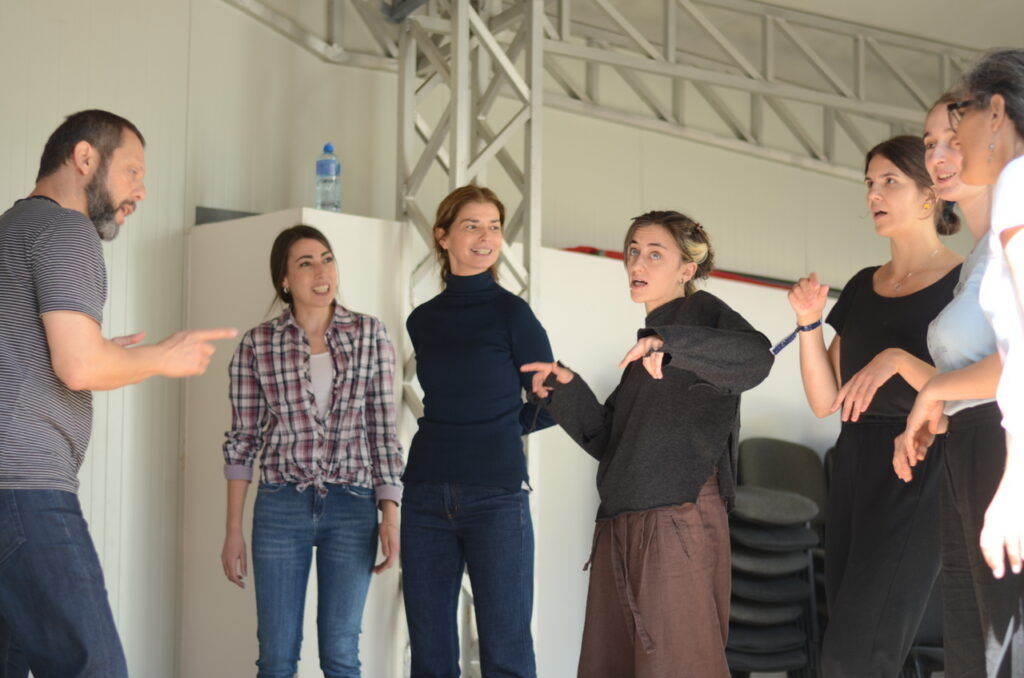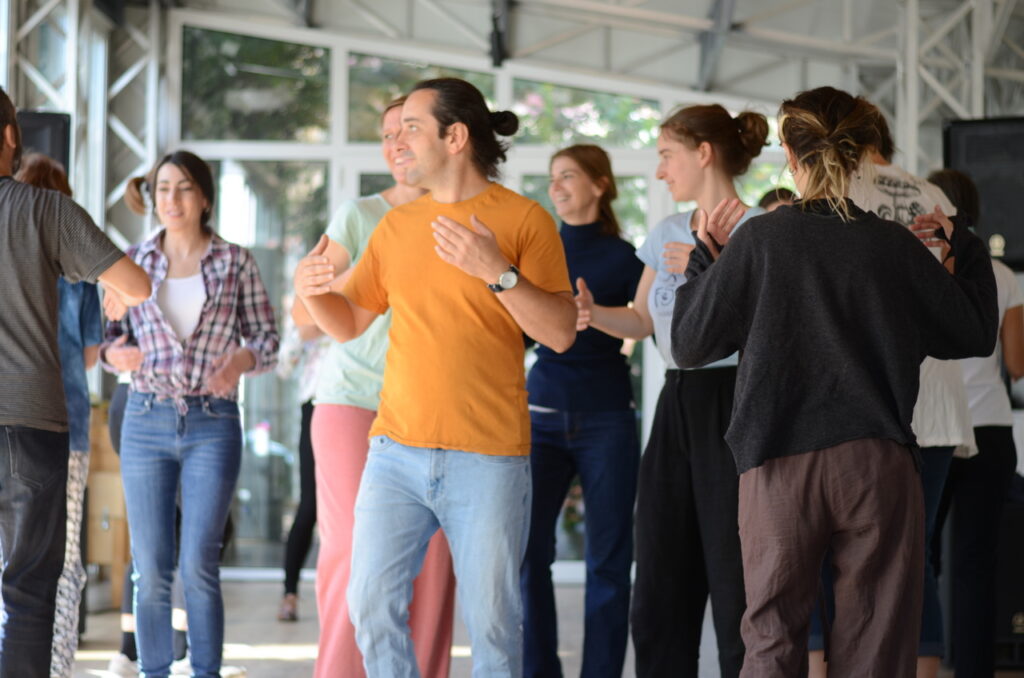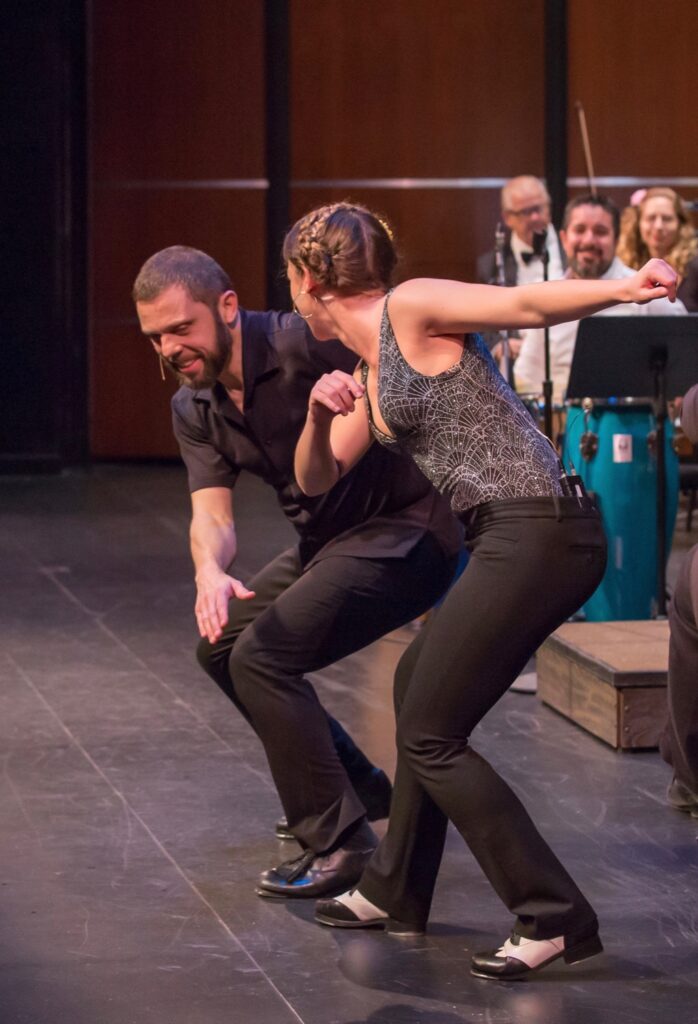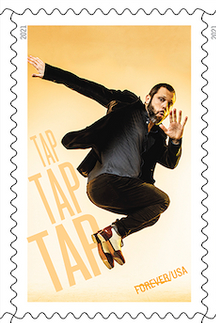Welcoming the great artists that are coming to the New Balkan Rhythm festival, we will present Max Pollak. He is a true citizen of the world, a native of Vienna who lives in New York and practices tap dancing. He studied Afro-Cuban and South American music and dance heritage, and always weaves his European roots into his music. He is a dancer, a musician, a singer; choreographer, lecturer, musical and theater performer.
Solo performer as well as a leader of the Max Pollak Group, he often works in New York as a choreographer who stages dance and music performances, at the same time performing in them. He also performs in instrumental ensembles as a percussionist, by tap dancing and playing body percussion, transferring the dance into a rhythmic line.
Ana and Marko, the organizers of the festival, met Max at the Body Rhythm festival in Hamburg in 2019, where they attended his workshops and immediately there was spontaneous mutual recognition, appreciation and developed artistic sympathies. Since then, they plan to work together. Last year was the first time they cooperated at the first New Balkan Rhythm festival.
When and how did you start doing body percussion?
I started doing body percussion while I was studying jazz and drums at the New School in New York city in the mid nineties. I was studying in a jazz programme. That is where I encountered Afro-Cuban music.
As I studied the Cuban rhythms I started using them together with my tap dancing and I put certain patterns of rhythm on my feet with the tap dancing and others on my hands; sometimes the patterns of conga drums, sometimes timbales, clave or cowbells. That’s how I began using my hands and my body for percussion to express different rhythms at the same time by myself, so I could sound like two or three people playing. Once I got comfortable with that I also started singing at the same time and that’s kind of where I feel the happiest.
Who or what inspires you? What moves you to create?
There are many people that inspire me. The first person to inspire me to get creative was Fred Astair. I saw musical movies with Fred Astair and Gene Kelly and that was my inspiration to start tap dancing. Then I met a great black tap dancer from Kansas City, his name was Karnell Loins. He became my first mentor when I was about fourteen. He inspired me immensely.
Then, coming to New York, Heather Cornell was person who brought me to New York to be with Manhattan Tap, professional tap dance company in the early nineties. Then I got to meet all these great heroes of mine: Gregory Hines, Buster Brown, Jimmy Slide, Lon Chaney, Chuck Green, and the list goes on, many tap dancers.
Also jazz musicians: I got to meet Danilo Perez, for instance, Barry Harris and play with them, I got to work with bass player Ray Brown, fantastic instrumentalists and singers, Phil Woods, great alto saxophonist from the bebop era. Also percussionists from all over Latin America: one of my great inspirations is Cyro Baptista, a Brazilian percussionist who also does a little bit of body percussion, and then I met Keath Terry and Fernando Barba, who were huge inspirations and influences on me.
How does your art change your community?
I like to travel, so I like to have an impact not only on the community where I live, in New York, but also many other communities throughout the world. I try to make sure wherever I go I get to also teach and spend some time with the people that are going to watch my performance. So I try to have as much contact as possible with the people, whether they are just audience members or students, so that we can really have some exchange of ideas, so we can spend some time together and relax and talk and eat together. I think that is very important, to have more of an exchange of ideas and thoughts. For me it is important to not just get on the stage and get an applause. For me, the most important part is to spend time with the people in a place, wherever that is.
I love eating, food, traditions, folklore, I love learning about the culture wherever I am. I think that’s the key to world peace. If more people could and would travel and if they went and tried to learn about other people’s culture, history, habits and what people like and then we would understand each other better. That’s at the root of why I like to be an artist.
Max Pollak’s workshops at the New Balkan Rhythm festival
MeloBody – Song Yourself
The workshops will introduce Max Pollak’s full-body concept of making music:
Feeling and playing the pulse, the rhythmic style and the melody elements while expressing yourself through your own movement.
Participants will experience some folkloric music as well as Max’s original compositions, singing and dancing several parts together in groups.
Tell us more about your art style.
My art style is an original combination of rhythmic expression with my feet, my hands and my voice at the same time and there is nobody in the world who does it like I do it. It’s tap dancing, body percussion and singing vocals at the same time and I’m moving and dancing. I enjoy doing that.
I enjoy improvising. I am very happy to do free improvisation. I’ve done a lot of projects where the entire concert or the entire project was based on improvisation.
I am also a composer and arranger, so I also do a lot of work where everything is written out and everything is composed and there is very little improvisation. I perform classical music, which is very important to me, also.
I am not really attached to any specific style of art. I am very happy going in many directions and exploring many different avenues and many different facets and styles and genres. To me there is only music and art. I try to not limit myself, not to see the boundaries and separate the genres.
Tell us more about how you teach and what you prefer in teaching.
I teach rhythm and music through several different ways of expression. I teach rhythm through the body, the feet, hands and voice and also through the movement. Basically, I try to share with people how easily they can connect their feet, legs, arms and bodies to their musical ideas.
Everybody has music in their soul, everybody has musical ideas, the problem is that most people don’t think that they have music inside of them, but everybody does. It is just important to be patient and to find the door to open so that any person can express themself. But I believe very strongly that every person has music and art inside of them. I think it is a part of our genetic code as humans that we have an artistic instinct to want to express ourselves and make something that is not necessarily immediately important for survival, but just for fun and enjoyment and to inspire each other.
I think that is really the key and that is what I try to teach, to help everybody find that door so they can open that door and let the art come out. Whether it’s through singing, clapping, doing body percussion, it doesn’t really matter, but I want to be the person who helps you express yourself artistically.
I teach rhythmic patterns that are based in Afro-Cuban culture, Afro-Brazilian culture and I also teach many other different traditions. In this workshop I will be mainly focusing on Brazilian and Cuban rhythms.
What will your workshops at the festival New Balkan Rhythm focus on? Who can follow them?
My workshops are for anybody, everybody can do these kinds of rhythms.
It is just a matter of patience: you just have to listen, pay attention and practice a little bit. It’s easy enough for anybody to do.
You don’t have to be a dancer or a musician, you just have to want to do it.
Interview questions: Marija Mitić and Ana Vrbaški
Interview translated by Ana Vrbaški





